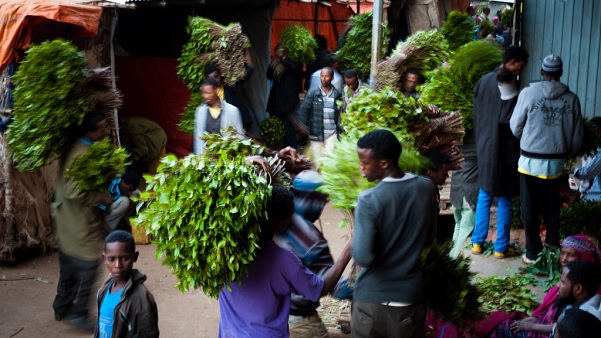
“THIS is khat,” explains Teklu Kaimo, gesturing to the wooded field behind him. He started growing it in 1976, and over the years its soft, green leaves have brought him a measure of prosperity. He has a modest plot of land, 11 children and money to pay their way through school.
A short walk down the hill, the central marketplace of this part of southern Ethiopia comes alive with farmers, merchants and salesmen as the sun sets. Young men sprint down streets with bundles of fresh khat (qat) leaves on their shoulders, as traders call out prices and haul the bags aboard lorries. They are bound for Addis Ababa, the capital, where the following morning they will be sold to khat-chewers in the city, or packed onto planes bound for neighboring Djibouti and Somaliland.
Ethiopia’s trade in khat, a mild stimulant native to this part of Africa, is booming. Where once cultivation and consumption were restricted to the Muslim lowlands towards the country’s east, today it is grown and masticated throughout the country. Nearly half a million hectares of land are thought to be devoted to it, some two-and-half times more than was grown 15 years ago. Many of those cultivating it have switched from coffee, Ethiopia’s biggest export, to one that offers juicier and more stable returns. Khat is now the country’s second-largest source of foreign currency, and, with prices rising, a handy source of government revenue.
